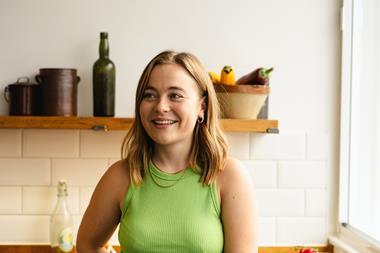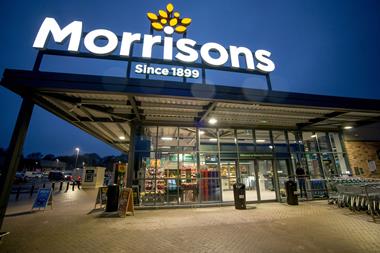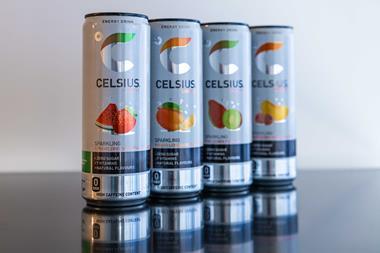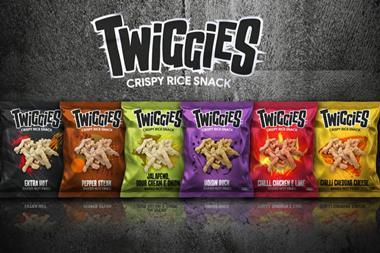If you really want your product to make an entrance, experiential marketing is the way to get attention on the cheap. Samantha Lyster meets the star acts strutting their stuff
It's not the usual location for a fabulous London party, but this summer the rooftop of a Peckham multi-storey car park is the place to be seen. Frank's pop-up café is heaving with skinny boys wearing Wayfarer sunglasses, hanging out with Pixie Geldof clones and all drinking... Campari.
Although the impact on sales is difficult to gauge, for Campari it was all about moving in the right circles.
"It's been great for building relationships with the art world here, since it already has connections in Italy," says a spokesman.
Campari is not the only one to cash in on alternative promotional techniques that appear to have more to do with style than substance although so far this kind of experiential marketing has been dominated by drinks brands. Typically, they collaborate with artists, chefs and trend setters to create "happenings" that appeal to consumers they may not otherwise touch or, indeed, lock in those who are being poached by somebody else. Courvoisier's painfully pretentious Future 500 list of artists, innovators and entrepreneurs, which works much like a private members' club, is probably the most extreme example of the latter. This was the second year that list members collaborated with food architect Bompas & Parr to create an experiential event. The Complete History of Food a series of live cameos in a Belgrave Square building (above) was one of seven quirky events this summer held under the title The Courvoiser Revolutionary Spirit 2010 and illustrated different taste experiences from throughout history. Last year, Bompas & Parr were chosen to execute the even more bizarre Architectural Punchbowl a concept that saw consumers floating on rafts through an upmarket London house that had been flooded with four tonnes of Courvoisier punch. As headline-grabbing stunts go, it was hard to beat.
"The Cognac category has been suffering in recent times, with all Cognac brands experiencing a fall in sales volume as other spirits and wine have grown in popularity. There was a need, therefore, to revolutionise the traditional image of Cognac to attract new consumers and encourage those consuming it to remain loyal.
"In order for Courvoisier to lead Cognac back into growth, an activation plan was needed that was brave and bold to stand apart from other spirits."
The strategy paid off. The brand has reachged an estimated 36 million consumers, says McIntosh, and pepped it up no end.
"Courvoisier is performing well above category average across all key metrics including having the highest levels of positive word-of-mouth in the category."
All this theatre has a dramatic effect, say marketers, because it reaches the oh-so-desirable consumer group known as 'the opinion leaders'. They are the people who really matter because they spread a powerful message that a brand is cool.
This kind of relationship between activity and a brand goes a stage further than sponsorship because often the
The traditional advertising model, where the consumer is a passive recipient of the message, is old hat, says Mintel senior drinks analyst Jonny Forsyth. "These days younger consumers prefer and expect to engage with a brand rather than be talked at," he says. "Being an active partner in events that interests their consumers gives brands a chance to do this, and, with the resulting PR, which is often co-ordinated with the events, offers excellent value for money rather than paying for, say, TV adverts, which is a difficult medium for targeting key younger consumers.
"Designer brands are increasingly trying to capture the trend-setters whom others will follow. This type of grass-roots marketing was popularised in writer Malcolm Gladwell's book The Tipping Point which examines sociological change and marketers are realising that if the right type of people are drinking their brands, this will then filter down into the mainstream."
Campari fell into the collaboration with Frank Boxer. He was already a huge fan of the drink when he launched his Peckham venture last year and contacted Campari to ask permission to call it Frank's Café and Campari Bar. For the first pop-up café Campari just donated merchandise. This year its 150th it was a bit more switched on, hiring in the PR and inviting the media.
For brands such as Hendrick's Gin, Bombay Sapphire, Courvoisier and the whisky Monkey Shoulder, however, there is a good deal more strategic intent.
One consumer type responds particularly well to marketing theatre, says Emma Laney, founder of boutique marketing agency Syren women.
"Women value different types of communication to men," adds Laney. "They seek greater cross-collaboration and involvement with brands. They look to 3D experience over more two-dimensional facts and information. What is most interesting is their propensity to actively disseminate marketing messages.
"There are two dimensions of the women's buying process that make them more profitable consumers: loyalty and referrals. Since they are more demanding in making an initial purchase, they tend to stay loyal to the brand they have chosen, thus validating their decision. Secondly, they are more likely to recommend to others. Women will recommend a positive experience 21 times, while men only 2.6 times."
Laney cites Hendrick's Gin as a particularly interesting example of how a brand has developed a personality that is not only attractive to women, but also those all-important style-leaders. Hendrick's activity has included hosting a day for 'Chaps' where young gentleman were encouraged to dress smart and sport moustaches. This summer, the Hendrick's Horseless Carriage a converted 19th century railway coach will be offering complimentary G&Ts and hosting literary sessions and exclusive dinners for selected guests this summer. "It has traded on its heritage and really gone for the English eccentric angle," says Laney. "I went to a Hendrick's event where we were drinking gin out of tea cups."
As a relatively new brand it was important to get the drink into people's hands, says Tom Wade, Monkey Shoulder's marketing manager, and the fact that the drink is perfect for cocktails means it is at an advantage, not just in attracting women but also men who would not normally drink whisky.
"We're looking to convert people who drink spirits, but have not thought about trying whisky," he says. "As a young brand we need to get people to taste the product. We could take out adverts in newspapers and magazines and it won't make a difference, but if we can get someone to try and really like the drink, then that is of great value."
Bombay Sapphire did something similar last weekend by partnering with the V&A Summer Camp six tents dotted throughout the museum, curated by designers and artists including Fabien Cappello. Designer Giles Miller was commissioned by the drinks maker to reinforce the sustainability theme by creating Martini-style glasses made entirely from card, served from its cardboard-constructed Twilight Bar for guests to sip gin from during the night. Musicians performed to drinkers seated at cardboard benches.
While drinks brands are leading the way with this kind of experiential marketing, food is not far behind. Angella Newell is co-founder of The Tasting Sessions, a series of food & drink cultural events. People want to learn about what they are eating and drinking in new and interesting ways, she says.
"At The Tasting Sessions we look to work with chefs and food producers who are doing something different, whether that be launching a new product or repositioning an existing one with an unconventional match in an immersive environment."
Take Damian Allsop. He produces high-quality chocolates for Michelin restaurants and has concessions in department stores. Nothing unusual there, you might think. But the chocolate contains no milk or cream, just water, which is why Allsop has been working with The Tasting Sessions to explain it to consumers.
"Because people are so used to chocolate being made with cream it is important to get people to taste our chocolate, to realise that it is full of flavour," he says. "Once they taste it, they get it and we've had a lot of positive feedback from people attending the events, as well as great networking opportunities."
On a much larger scale, Ben & Jerry's ice cream organises its own two-day festival, Sundae on the Common, held every July in Clapham. Not only has the festival, which costs £15 to attend, got thousands of consumers tasting the brand but it has also boosted Ben & Jerry's Fairtrade reputation. That was particularly important this year as the brand accelerates towards becoming 100% Fairtrade by February 2011. As well as giving out free dollops of Fairtrade flavours, the 25,000 visitors this summer took part in Fairtrade banana jousting and Fairtrade nut crazy golf.
Ben & Jerry's Sundae Girl, senior brand manager Vicky Willis, says the festival has been great for gathering feedback from consumers about what does and does not work. Activity like this has also helped boost sales 24% year-on-year, so it now accounts for 52% of the luxury ice cream market [IRI Grocery MAT 15 May 2010].
"B&J's Nuts about Fairtrade experiential activity has undoubtedly played a part in driving these awesome results, which is why we've run music festivals for six years consecutively," says Willis. "We recognise that consumers are spending their time in different ways our philosophy is to use experiential and social media to bring people closer to the brand."
Lucy Johnston, founder of the Neon Birdcage, a company that specialises in helping the food & drink market develop experiential marketing, says there is still lots more to explore. "Marketing campaigns from food and drink brands have come a long way since the days of tasting tables on pavements," says Johnston. "Brands are realising that the most effective way to excite consumers and ensure they remember the brand is to create social and cultural experiences that offer something a little bit quirky."
Ladies and gents, take your seats...
It's not the usual location for a fabulous London party, but this summer the rooftop of a Peckham multi-storey car park is the place to be seen. Frank's pop-up café is heaving with skinny boys wearing Wayfarer sunglasses, hanging out with Pixie Geldof clones and all drinking... Campari.
Wall’s
Sausage-maker Wall's is taking a pop-up café around the festival circuit this summer as part of its Bring It On Britain campaign, which culminates in the Bring It On heroes awards in September. The cafe, which will pop up at the V Festival and the After Dark festival serving sausage sandwiches, bacon baps and mugs of builders' tea, forms part of a search for "have a go" heroes such as the 78-year-old gliding granny from Buckminster.
Yes, the drink forever associated with Essex girl Lorraine 'drop the aitch' Chase from Luton Airport is now being enjoyed by impossibly hip consumers. Thanks to the pop-up café, created by deli owner Frank Boxer, Campari has been mentioned in Vogue, The Guardian and a host of influential blogs and style magazines, which, but for this edgy (and comparatively cheap) form of what could be termed theatrical marketing, the brand would never have hoped to reach. Sausage-maker Wall's is taking a pop-up café around the festival circuit this summer as part of its Bring It On Britain campaign, which culminates in the Bring It On heroes awards in September. The cafe, which will pop up at the V Festival and the After Dark festival serving sausage sandwiches, bacon baps and mugs of builders' tea, forms part of a search for "have a go" heroes such as the 78-year-old gliding granny from Buckminster.
Although the impact on sales is difficult to gauge, for Campari it was all about moving in the right circles.
"It's been great for building relationships with the art world here, since it already has connections in Italy," says a spokesman.
Campari is not the only one to cash in on alternative promotional techniques that appear to have more to do with style than substance although so far this kind of experiential marketing has been dominated by drinks brands. Typically, they collaborate with artists, chefs and trend setters to create "happenings" that appeal to consumers they may not otherwise touch or, indeed, lock in those who are being poached by somebody else. Courvoisier's painfully pretentious Future 500 list of artists, innovators and entrepreneurs, which works much like a private members' club, is probably the most extreme example of the latter. This was the second year that list members collaborated with food architect Bompas & Parr to create an experiential event. The Complete History of Food a series of live cameos in a Belgrave Square building (above) was one of seven quirky events this summer held under the title The Courvoiser Revolutionary Spirit 2010 and illustrated different taste experiences from throughout history. Last year, Bompas & Parr were chosen to execute the even more bizarre Architectural Punchbowl a concept that saw consumers floating on rafts through an upmarket London house that had been flooded with four tonnes of Courvoisier punch. As headline-grabbing stunts go, it was hard to beat.
Vedett
Belgium lager Vedett is taking a 10 tonne cement mixer truck around the country in a bid to raise awareness of the brand. Up until 29 August, Vedett is hosting a series of parties, with the truck transformed to look like one of its bottles as the main attraction and ultimate competition prize. Each Saturday of the tour a bar in the host cities of Birmingham, Leeds, Sheffield and London will hold a Vedett Vinyl party.
Courvoisier marketing manager Janice McIntosh says the Punchbowl event attracted more than 1,400 visitors, generated 77 pieces of coverage plus one broadcast item, resulting in the brand reaching 144,605,600 consumers worldwide. It was so effective that Courvoisier upped its total promotional spend by 25% this year to £15m, partly to fund the Spirit campaign. Belgium lager Vedett is taking a 10 tonne cement mixer truck around the country in a bid to raise awareness of the brand. Up until 29 August, Vedett is hosting a series of parties, with the truck transformed to look like one of its bottles as the main attraction and ultimate competition prize. Each Saturday of the tour a bar in the host cities of Birmingham, Leeds, Sheffield and London will hold a Vedett Vinyl party.
"The Cognac category has been suffering in recent times, with all Cognac brands experiencing a fall in sales volume as other spirits and wine have grown in popularity. There was a need, therefore, to revolutionise the traditional image of Cognac to attract new consumers and encourage those consuming it to remain loyal.
"In order for Courvoisier to lead Cognac back into growth, an activation plan was needed that was brave and bold to stand apart from other spirits."
The strategy paid off. The brand has reachged an estimated 36 million consumers, says McIntosh, and pepped it up no end.
"Courvoisier is performing well above category average across all key metrics including having the highest levels of positive word-of-mouth in the category."
All this theatre has a dramatic effect, say marketers, because it reaches the oh-so-desirable consumer group known as 'the opinion leaders'. They are the people who really matter because they spread a powerful message that a brand is cool.
This kind of relationship between activity and a brand goes a stage further than sponsorship because often the
Ben & Jerry’s
The brand used its annual Sundae in the Park event last week to kickstart the Pass the Fairtrade Parcel campaign, which continues in virtual form on Facebook. B&J's incentivised its record-breaking bid to create the longest pass-the-parcel chain by offering a downloadable 50p-off-500ml-tub coupon every time it's passed on. More than 12,000 consumers visited Clapham Common each day over the Sundae weekend.
brand initiates the happening and therefore benefits from getting its name right up there in media coverage rather than just gaining subliminal attention through banners and merchandise at the event. The brand used its annual Sundae in the Park event last week to kickstart the Pass the Fairtrade Parcel campaign, which continues in virtual form on Facebook. B&J's incentivised its record-breaking bid to create the longest pass-the-parcel chain by offering a downloadable 50p-off-500ml-tub coupon every time it's passed on. More than 12,000 consumers visited Clapham Common each day over the Sundae weekend.
The traditional advertising model, where the consumer is a passive recipient of the message, is old hat, says Mintel senior drinks analyst Jonny Forsyth. "These days younger consumers prefer and expect to engage with a brand rather than be talked at," he says. "Being an active partner in events that interests their consumers gives brands a chance to do this, and, with the resulting PR, which is often co-ordinated with the events, offers excellent value for money rather than paying for, say, TV adverts, which is a difficult medium for targeting key younger consumers.
"Designer brands are increasingly trying to capture the trend-setters whom others will follow. This type of grass-roots marketing was popularised in writer Malcolm Gladwell's book The Tipping Point which examines sociological change and marketers are realising that if the right type of people are drinking their brands, this will then filter down into the mainstream."
Campari fell into the collaboration with Frank Boxer. He was already a huge fan of the drink when he launched his Peckham venture last year and contacted Campari to ask permission to call it Frank's Café and Campari Bar. For the first pop-up café Campari just donated merchandise. This year its 150th it was a bit more switched on, hiring in the PR and inviting the media.
For brands such as Hendrick's Gin, Bombay Sapphire, Courvoisier and the whisky Monkey Shoulder, however, there is a good deal more strategic intent.
Campari
The drinks brand's pop-up bar in Peckham came about by accident rather than design. But having scented an opportunity to align the brand with the chattering classes and move up the social ladder (in Italy, Campari is a well-known sponsor of the modern arts), it helped promote the multi-storey car park event this year. Frank's café and Campari bar now looks set to become an annual event in the trendy south east London calendar.
For drinks brands especially faced as they are with a sales decline of £1.5bn over the past five years [Mintel] finding new and ever-more imaginative ways of capturing consumers is vital. The drinks brand's pop-up bar in Peckham came about by accident rather than design. But having scented an opportunity to align the brand with the chattering classes and move up the social ladder (in Italy, Campari is a well-known sponsor of the modern arts), it helped promote the multi-storey car park event this year. Frank's café and Campari bar now looks set to become an annual event in the trendy south east London calendar.
One consumer type responds particularly well to marketing theatre, says Emma Laney, founder of boutique marketing agency Syren women.
"Women value different types of communication to men," adds Laney. "They seek greater cross-collaboration and involvement with brands. They look to 3D experience over more two-dimensional facts and information. What is most interesting is their propensity to actively disseminate marketing messages.
"There are two dimensions of the women's buying process that make them more profitable consumers: loyalty and referrals. Since they are more demanding in making an initial purchase, they tend to stay loyal to the brand they have chosen, thus validating their decision. Secondly, they are more likely to recommend to others. Women will recommend a positive experience 21 times, while men only 2.6 times."
Laney cites Hendrick's Gin as a particularly interesting example of how a brand has developed a personality that is not only attractive to women, but also those all-important style-leaders. Hendrick's activity has included hosting a day for 'Chaps' where young gentleman were encouraged to dress smart and sport moustaches. This summer, the Hendrick's Horseless Carriage a converted 19th century railway coach will be offering complimentary G&Ts and hosting literary sessions and exclusive dinners for selected guests this summer. "It has traded on its heritage and really gone for the English eccentric angle," says Laney. "I went to a Hendrick's event where we were drinking gin out of tea cups."
Red Stripe
Now into its fourth year of hosting its music awards for emerging talent, the beer brand says it's not about sales, but positioning. The campaign kicks off again in November with a series of regional gigs where new artists and bands are given the chance to play at credible live music venues around the UK. They can potentially win slots at next summer's best loved festivals, including The Great Escape and Lovebox.
Another brand looking to capture that cool 20 to 30-something market is Monkey Shoulder whisky. Last year, Monkey Shoulder debuted its treehouse a cocktail bar fashioned from old whisky barrels in London's Brick Lane. Temporarily housed in the Truman Brewery building, the brand invited passers-by to a free cocktail while DJs entertained. The treehouse was also taken to the Big Chill festival, and will return there this week.Now into its fourth year of hosting its music awards for emerging talent, the beer brand says it's not about sales, but positioning. The campaign kicks off again in November with a series of regional gigs where new artists and bands are given the chance to play at credible live music venues around the UK. They can potentially win slots at next summer's best loved festivals, including The Great Escape and Lovebox.
As a relatively new brand it was important to get the drink into people's hands, says Tom Wade, Monkey Shoulder's marketing manager, and the fact that the drink is perfect for cocktails means it is at an advantage, not just in attracting women but also men who would not normally drink whisky.
"We're looking to convert people who drink spirits, but have not thought about trying whisky," he says. "As a young brand we need to get people to taste the product. We could take out adverts in newspapers and magazines and it won't make a difference, but if we can get someone to try and really like the drink, then that is of great value."
Bombay Sapphire did something similar last weekend by partnering with the V&A Summer Camp six tents dotted throughout the museum, curated by designers and artists including Fabien Cappello. Designer Giles Miller was commissioned by the drinks maker to reinforce the sustainability theme by creating Martini-style glasses made entirely from card, served from its cardboard-constructed Twilight Bar for guests to sip gin from during the night. Musicians performed to drinkers seated at cardboard benches.
While drinks brands are leading the way with this kind of experiential marketing, food is not far behind. Angella Newell is co-founder of The Tasting Sessions, a series of food & drink cultural events. People want to learn about what they are eating and drinking in new and interesting ways, she says.
"At The Tasting Sessions we look to work with chefs and food producers who are doing something different, whether that be launching a new product or repositioning an existing one with an unconventional match in an immersive environment."
Take Damian Allsop. He produces high-quality chocolates for Michelin restaurants and has concessions in department stores. Nothing unusual there, you might think. But the chocolate contains no milk or cream, just water, which is why Allsop has been working with The Tasting Sessions to explain it to consumers.
"Because people are so used to chocolate being made with cream it is important to get people to taste our chocolate, to realise that it is full of flavour," he says. "Once they taste it, they get it and we've had a lot of positive feedback from people attending the events, as well as great networking opportunities."
On a much larger scale, Ben & Jerry's ice cream organises its own two-day festival, Sundae on the Common, held every July in Clapham. Not only has the festival, which costs £15 to attend, got thousands of consumers tasting the brand but it has also boosted Ben & Jerry's Fairtrade reputation. That was particularly important this year as the brand accelerates towards becoming 100% Fairtrade by February 2011. As well as giving out free dollops of Fairtrade flavours, the 25,000 visitors this summer took part in Fairtrade banana jousting and Fairtrade nut crazy golf.
Ben & Jerry's Sundae Girl, senior brand manager Vicky Willis, says the festival has been great for gathering feedback from consumers about what does and does not work. Activity like this has also helped boost sales 24% year-on-year, so it now accounts for 52% of the luxury ice cream market [IRI Grocery MAT 15 May 2010].
"B&J's Nuts about Fairtrade experiential activity has undoubtedly played a part in driving these awesome results, which is why we've run music festivals for six years consecutively," says Willis. "We recognise that consumers are spending their time in different ways our philosophy is to use experiential and social media to bring people closer to the brand."
Lucy Johnston, founder of the Neon Birdcage, a company that specialises in helping the food & drink market develop experiential marketing, says there is still lots more to explore. "Marketing campaigns from food and drink brands have come a long way since the days of tasting tables on pavements," says Johnston. "Brands are realising that the most effective way to excite consumers and ensure they remember the brand is to create social and cultural experiences that offer something a little bit quirky."
Ladies and gents, take your seats...


















No comments yet